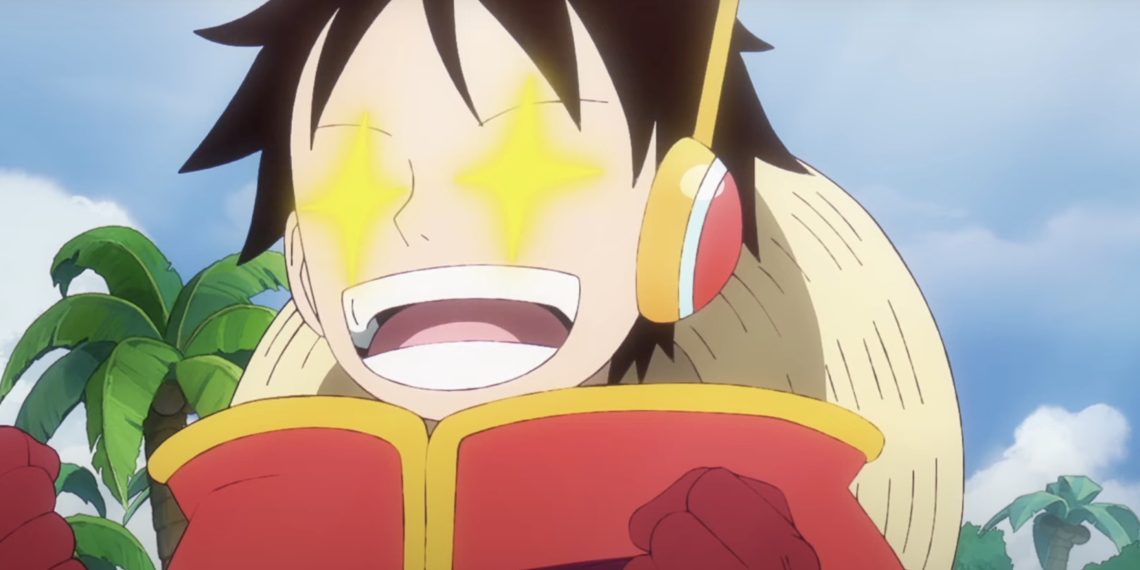One Piece centers around the charismatic shonen protagonist Monkey D. Luffy, a spirited young man on a quest to claim the title of Pirate King, following in the legendary footsteps of Gol D. Roger. Armed with his unique abilities, including his elastic combat style and unwavering determination, Luffy takes off on a perilous journey through the treacherous Grand Line, gathering a diverse crew of loyal companions along the way.
Regardless of his formidable strength and magnetic charisma, Luffy is not without his vulnerabilities. Throughout the series, he has encountered numerous challenges that have tested his resolve and forced him to confront his weaknesses.
These moments of humility serve to humanize him, making him a more relatable and well-rounded hero.
As Luffy progresses through his adventures, he gradually overcomes some of his most glaring weaknesses, growing stronger and more capable with each trial he faces. However, certain flaws and limitations persist, adding depth to his character as he enters the climactic Final Saga.
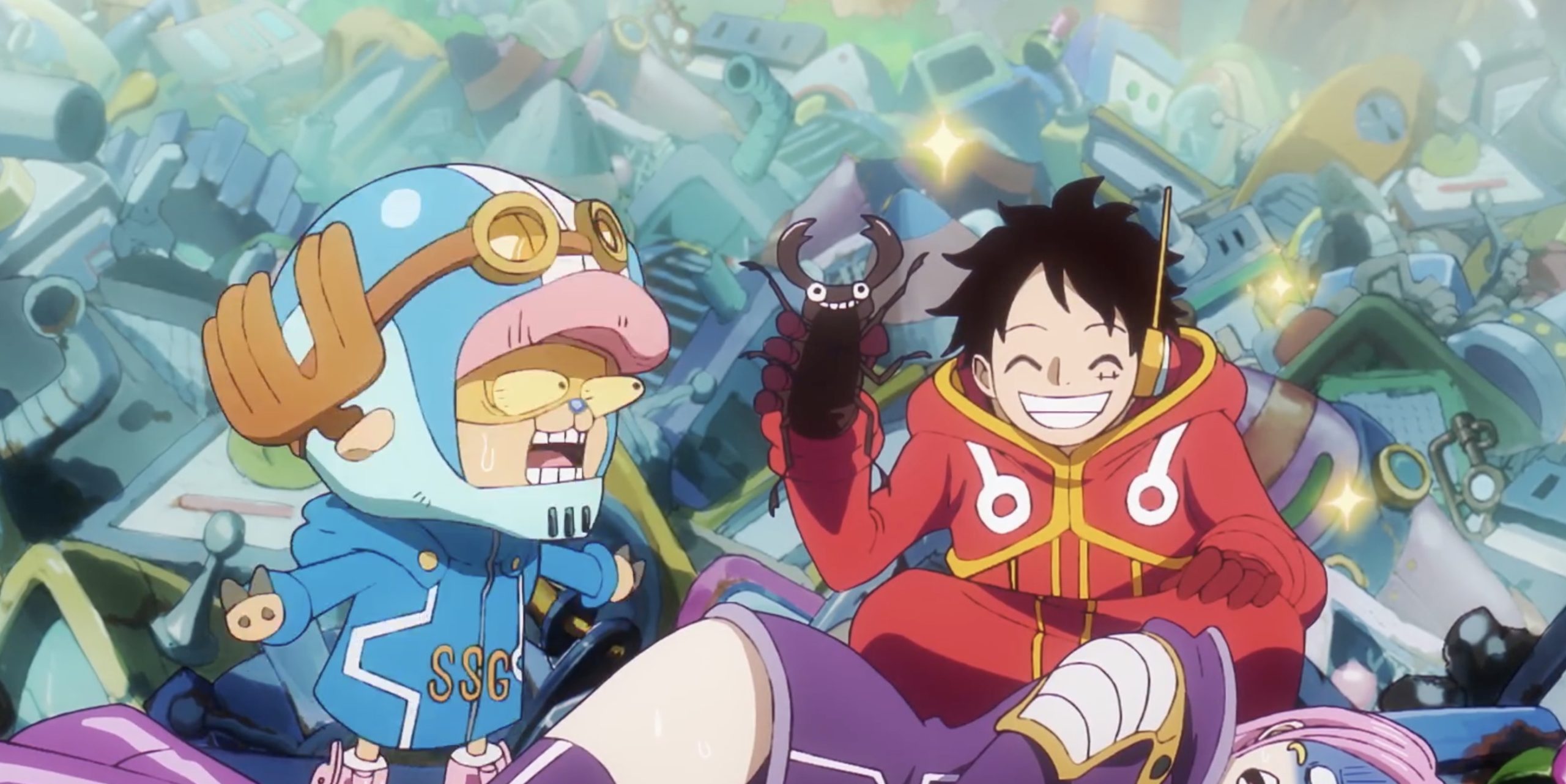
Among Luffy’s weaknesses are a mix of physical limitations and endearing quirks that highlight his humanity. Whether it’s his vulnerability to certain types of attacks, his impulsive nature, or his insatiable appetite for food, these traits contribute to his charm and make him a more compelling protagonist.
As Luffy prepares to confront the challenges of the Final Saga, his weaknesses serve as reminders of his humanity and provide opportunities for growth and development.
Despite his status as a young Emperor and a formidable force to be reckoned with, Luffy remains relatable and grounded, making him a beloved and enduring hero in One Piece.
List Of Luffy’s Weaknesses In One Piece
Here is a list of the top 10 weaknesses of the future Pirate King.
10. Gear 3 Leaves Luffy Small and Weak Upon Activation
Luffy’s Gear 3, a formidable technique in his arsenal, allows him to inflate one of his arms to massive proportions, delivering devastating blows like the Elephant Gun to his adversaries.
This technique proved key in battles against formidable foes such as CP9, serving as a precursor to the even more powerful Gear 4.
Despite its potency, Gear 3 is not without its drawbacks. Like its predecessor Gear 2, it comes with a significant weakness that even the audacious Luffy cannot afford to overlook.
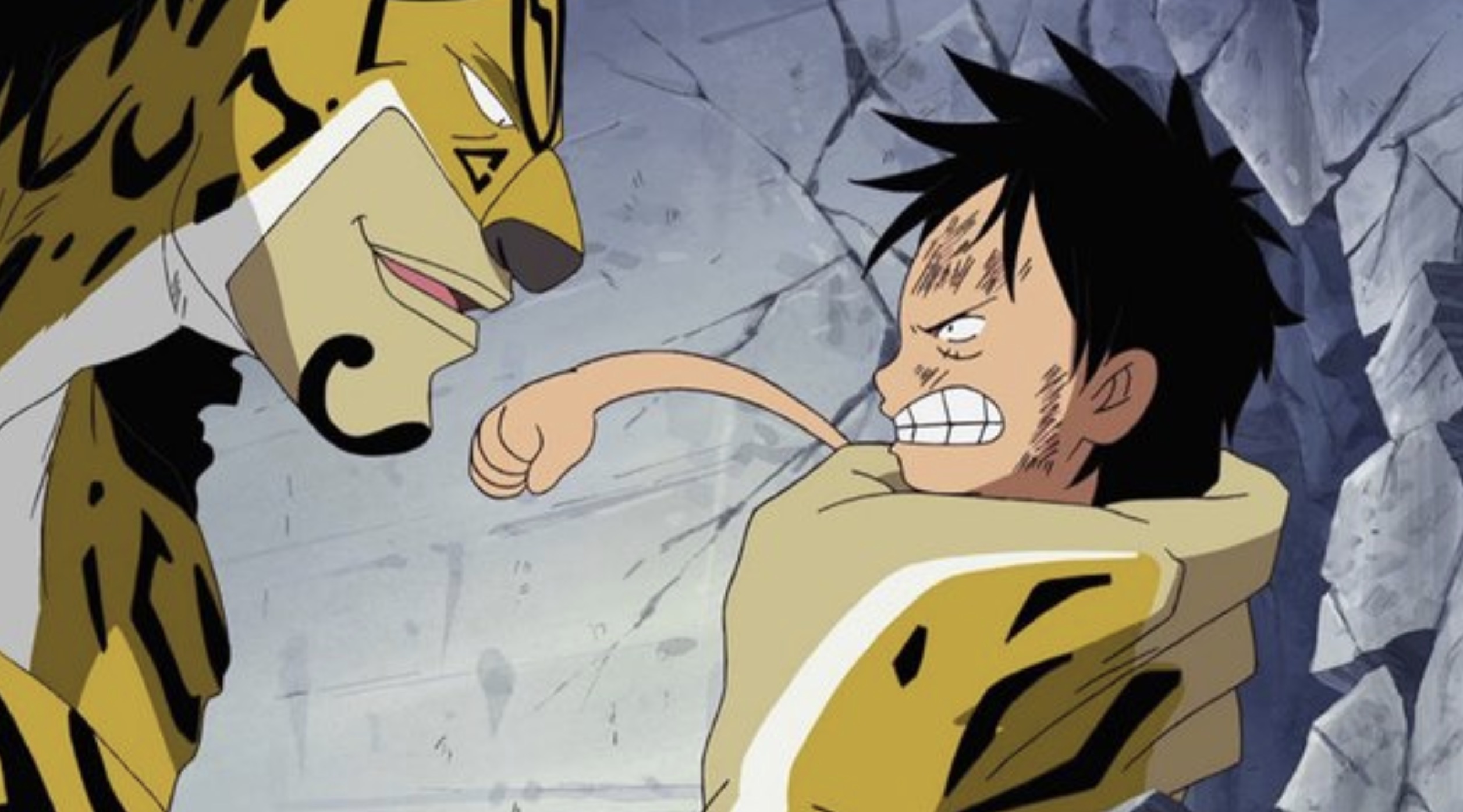
Upon activating Gear 3, Luffy experiences a temporary transformation where he shrinks down into a chibi-like form, rendering him weakened and vulnerable.
This vulnerability poses a considerable risk, compelling Luffy to dispatch his opponents swiftly while in Gear 3 or face dire consequences.
Instances of this weakness manifest throughout Luffy’s adventures, notably during the Impel Down arc. However, Luffy’s reliance on Gear 3 is mitigated by the presence of allies who can offer protection and support during his vulnerable state, as seen in the aforementioned arc.
Despite its drawbacks, Gear 3 remains a valuable asset in Luffy’s arsenal, allowing him to confront formidable adversaries with overwhelming force. However, the need for swift resolution in battle underscores the importance of strategy and timing when utilizing this powerful technique.
As Luffy continues to evolve as a fighter, he must navigate the strengths and weaknesses of his various gears to emerge victorious in the face of ever-increasing challenges.
9. Gear 2 Reduces Luffy’s Lifespan
Before the Water 7 saga, Luffy devised his own unique combat technique known as the Gears, which proved instrumental in overcoming formidable adversaries like CP9.
One notable instance was his first employment of Gear 2 against Blueno, showcasing its impressive effectiveness in battle. However, like many shonen powers, Luffy’s Gears come with a significant cost.
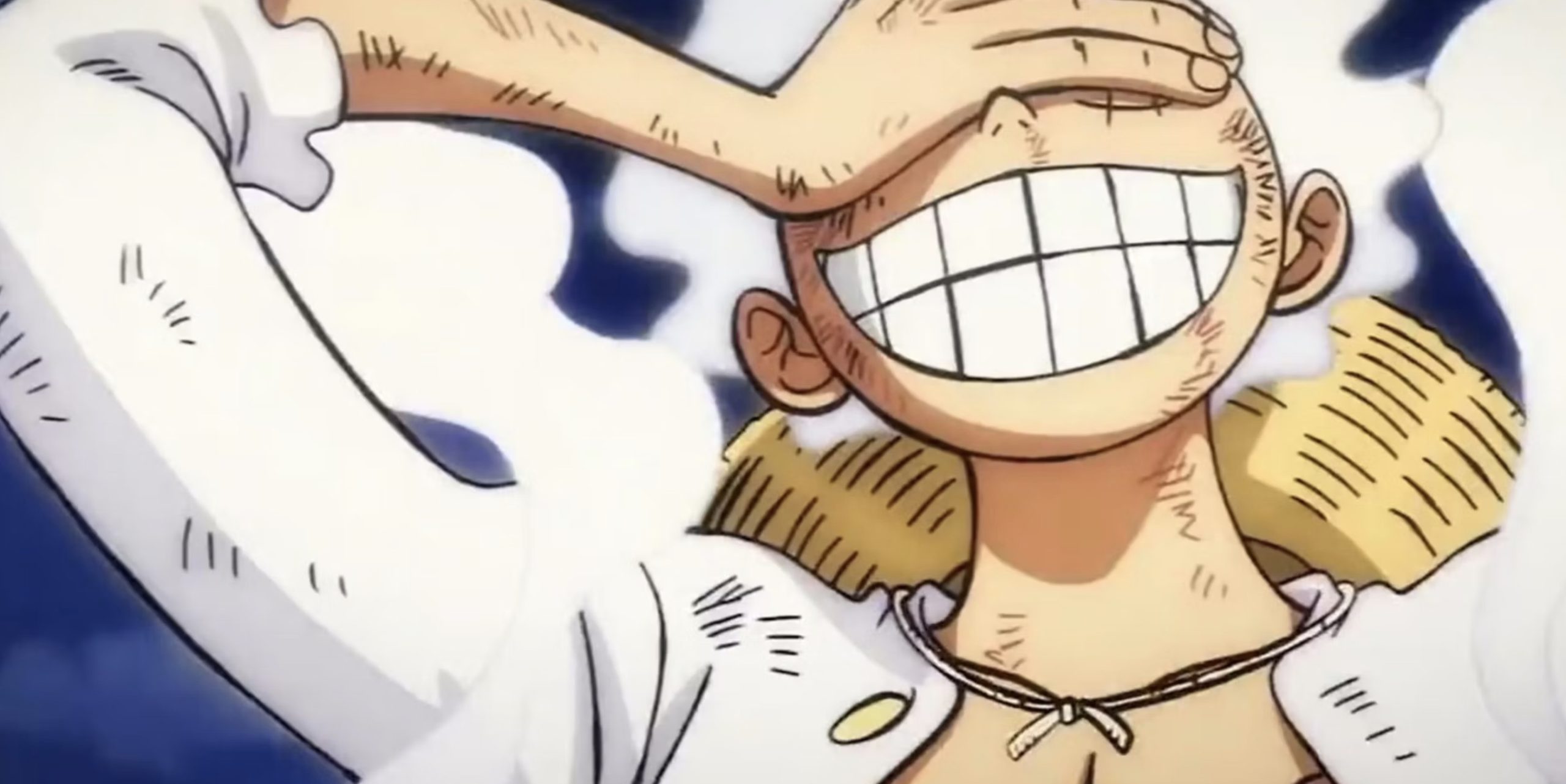
Gear 2, for instance, exerts tremendous strain on Luffy’s body. The repeated use of this technique not only accelerates his exhaustion but also poses a risk to his lifespan, prompting concerns among fans about his longevity.
Despite this potentially dire consequence, Luffy remains undeterred, prioritizing his freedom and happiness over concerns about his lifespan. In Luffy’s eyes, the sacrifices required to wield such power pale in comparison to the pursuit of his dreams and aspirations.
While the toll of Gear 2 on Luffy’s body is a serious consideration, it ranks as one of his least pressing weaknesses in One Piece. For Luffy, the prospect of a shortened lifespan pales in comparison to the pursuit of his ideals, emphasizing his unwavering commitment to his goals.
As he continues his journey to become the Pirate King, Luffy faces challenges and sacrifices with determination and resilience, embodying the spirit of adventure and freedom that defines him as a character.
8. Luffy is Susceptible to Blade Attacks
Luffy’s vulnerability to cutting and slashing attacks is a theoretical weakness that, while not frequently exploited in One Piece’s storyline, poses a significant threat in theory.
In a world where pirates and Marines often wield blades in combat, adversaries like the renowned Dracule Mihawk, known for his mastery of the sword Yoru, and other formidable swordsmen like Shanks, Kin’emon, and Mr. 1, present formidable challenges.
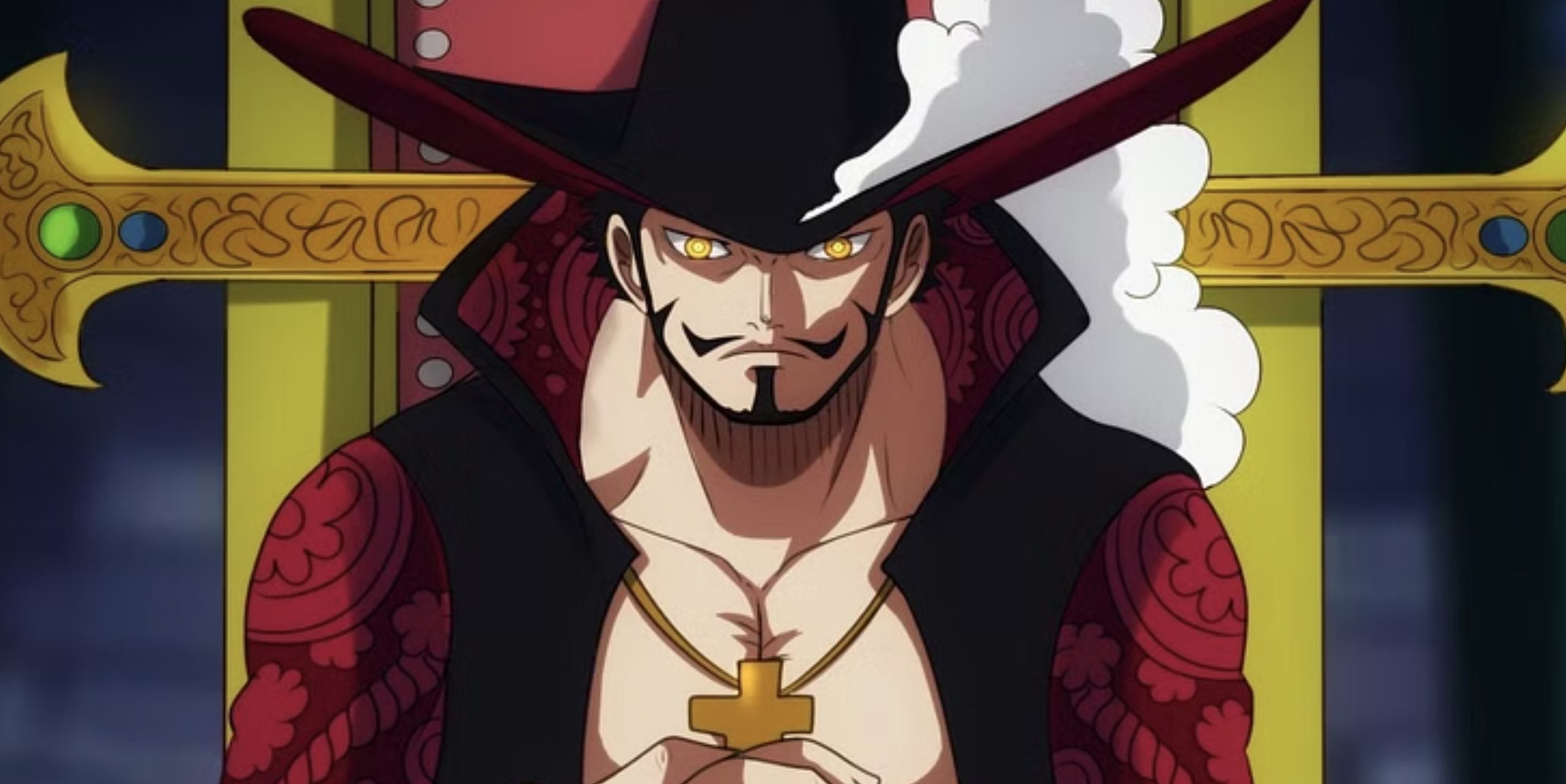
Unlike blunt physical attacks, which Luffy’s rubbery body can stretch to resist, he lacks a defense mechanism against bladed assaults, leaving him reliant on evasion tactics. While Luffy possesses moderate agility by One Piece standards, it’s not sufficient to counter skilled swordsmen in close combat.
Fortunately for Luffy, this glaring vulnerability is often mitigated by the presence of allies like Roronoa Zoro, whose expertise in swordsmanship allows him to effectively engage hostile blade users on Luffy’s behalf.
Zoro’s proficiency with a sword serves as a valuable asset in protecting Luffy from the dangers posed by bladed adversaries, demonstrating the importance of teamwork and complementary strengths among the Straw Hat crew.
While Luffy’s vulnerability to cutting and slashing attacks remains a potential weakness, the resourcefulness of his allies, combined with his own resilience and determination, often allow him to overcome such challenges and emerge victorious in the face of adversity.
7. Luffy is Incapable of Tolerating Sea Prism Stone
In One Piece, the inherent weaknesses of Devil Fruits are widely known, with one of the most prominent vulnerabilities being a user’s susceptibility to seawater.
While adversaries of Devil Fruit users may not always have the advantage of open sea to exploit this weakness, clever tactics on dry land have been devised to overcome this obstacle.
One such method involves the use of sea prism stone.
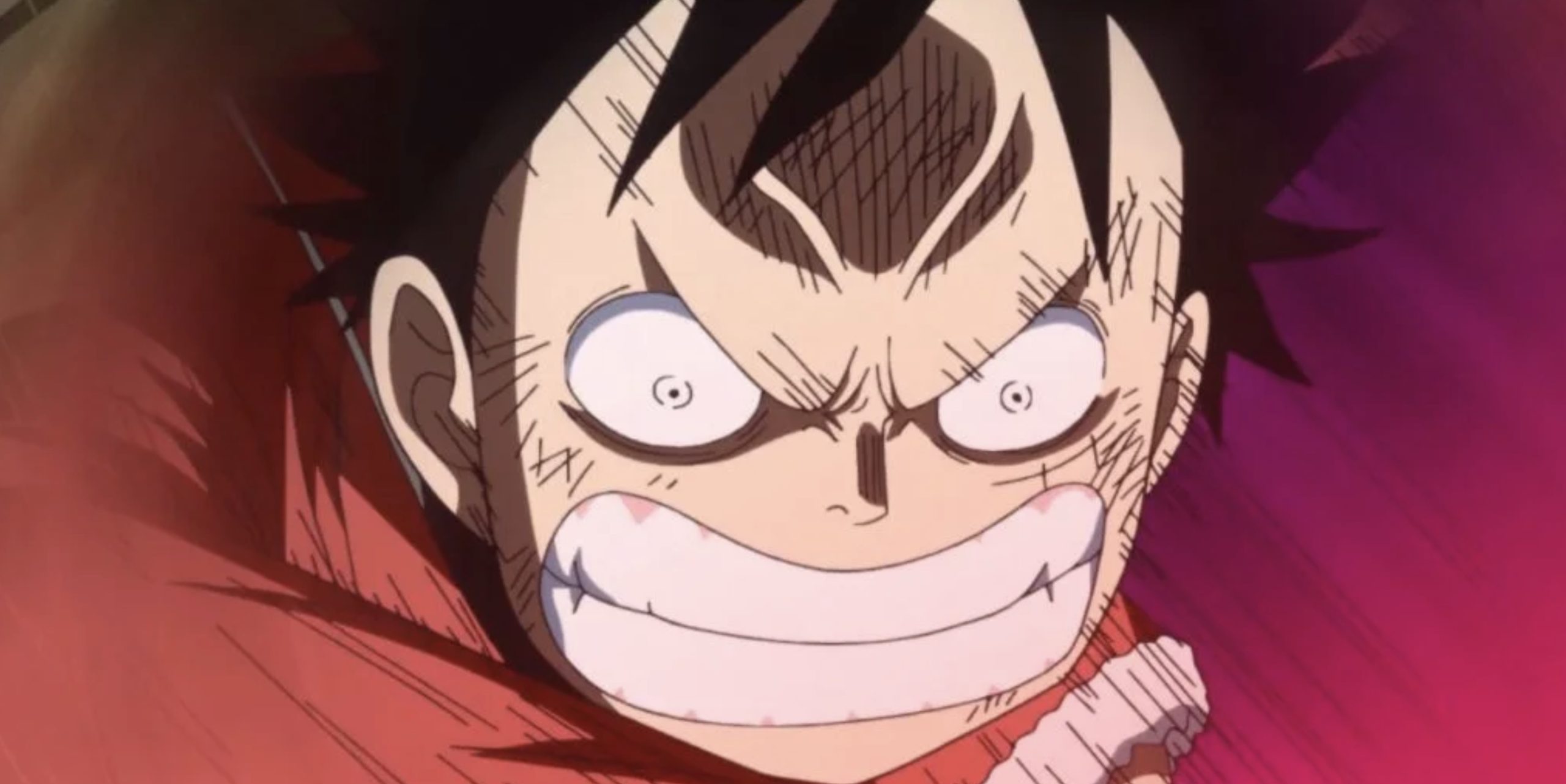
Though sea prism stone is a rare material that is sparingly mentioned in the series, its strategic significance is undeniable. When employed against Devil Fruit users, sea prism stone can neutralize their abilities, rendering them powerless.
This was demonstrated notably when Captain Smoker utilized a sea prism staff to subdue Luffy during the events at Loguetown. Without needing to physically assault Luffy, Smoker’s mere touch with the sea prism stone-infused weapon was enough to incapacitate the Straw Hat captain, showcasing the potency of this unique material.
Instances like these underscore the tactical advantage that sea prism stone provides in combat situations involving Devil Fruit users.
Its ability to nullify Devil Fruit’s powers with a single touch poses a formidable threat, leaving affected individuals vulnerable and reliant on external assistance to overcome the incapacitating effects.
In Luffy’s case, the intervention of Dragon was necessary to rescue him from Smoker’s sea prism stone-infused weapon, highlighting the severity of the situation and the critical importance of allies in navigating the dangers posed by such advanced tactics.
As the Straw Hat crew continues their journey, encounters with adversaries wielding sea prism stones may become more frequent, necessitating vigilance and strategic planning to overcome these formidable challenges.
6. Luffy is Less Effective When Hungry
Monkey D. Luffy’s insatiable appetite has long been a recurring theme in One Piece, reminiscent of the “big eater” trope popularized by characters like Son Goku in Dragon Ball. While often played for laughs, Luffy’s voracious appetite can have tangible effects on his strength and stamina.
There are moments when Luffy’s consumption of copious amounts of food leads to remarkable feats of strength, such as when he devours a large quantity of food to counteract the effects of Magellan’s deadly poisons.
In these instances, food serves as a source of replenishment and revitalization for Luffy, enabling him to overcome formidable obstacles.

However, Luffy’s bottomless appetite can also serve as a hindrance, particularly when hunger strikes at inopportune moments. If deprived of sustenance for too long, Luffy’s energy levels plummet, causing him to weaken and become sluggish.
On more than one occasion, Luffy has found himself incapacitated due to intense hunger, rendering him unable to fight or even stand. In these critical moments, his crewmates spring into action, rushing to procure food, preferably meat, to restore Luffy to fighting form before disaster strikes.
These instances underscore the importance of food not only as a source of nourishment but also as a vital component of Luffy’s strength and vitality.
While his bottomless appetite may lead to comedic situations, it also serves as a poignant reminder of the reliance on basic necessities even for the most formidable of heroes.
In One Piece, the power of friendship and the satisfaction of a hearty meal are equally indispensable in overcoming life’s challenges.
5. Luffy Encounters Problems Due to His Impulsive Actions
As is characteristic of many shonen protagonists, Monkey D. Luffy exudes bravery and impulsiveness, often diving headfirst into battle and embracing risks in his quest to save the day.
This bold approach frequently catches cautious adversaries off guard and allows Luffy to seize the initiative in combat. However, there have been instances where Luffy’s impulsive nature has backfired, leading to significant setbacks.
One notable example occurred in Alabasta, where Luffy rashly challenged Sir Crocodile, only to suffer defeat twice at the hands of the cunning antagonist. In his first encounter, Luffy’s recklessness nearly cost him his life, saved only by the intervention of Nico Robin.
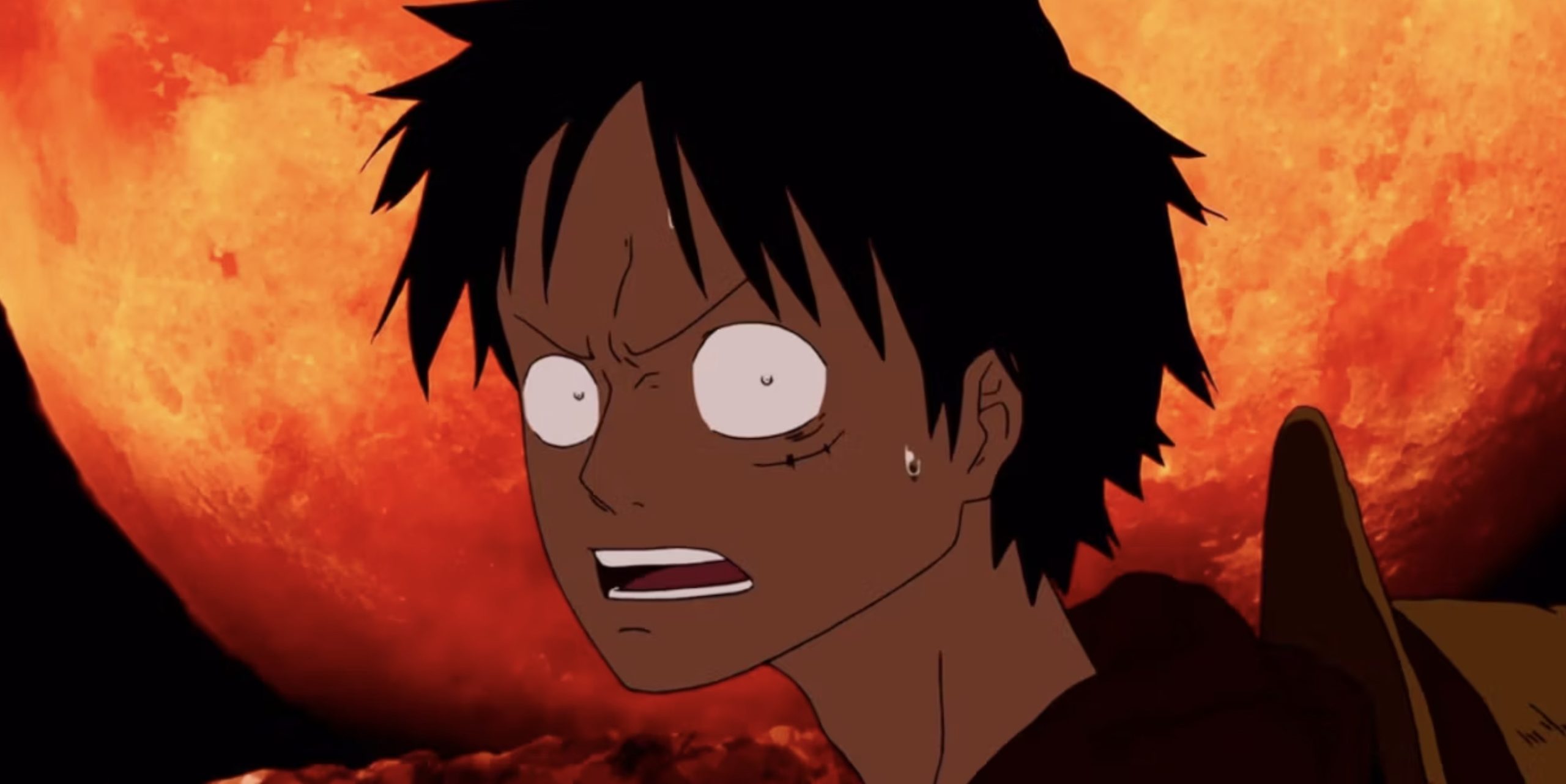
Despite this setback, Luffy persisted in his confrontation with Crocodile, ultimately emerging victorious through determination and resilience.
Similarly, during his time in the undersea prison Impel Down, Luffy boldly faced off against Warden Magellan, even resorting to sacrificing his arms to land a few blows.
However, Luffy’s failure to incapacitate Magellan led to a devastating counterattack that left him gravely injured and on the brink of death.
Luffy’s brash attitude undoubtedly ranks as one of his more significant weaknesses, as his impulsive nature often leads him into perilous situations.
Despite the dangers and setbacks he faces, however, Luffy remains steadfast in his resolve and is unlikely to change his reckless behavior anytime soon. It is this unwavering determination and fearlessness that defines him as a character and drives him forward in his quest to become the Pirate King.
4. Luffy’s Navigational Skills are Lacking
Monkey D. Luffy’s journey to overcome his weaknesses has been marked by growth and the realization of the importance of delegation within his crew. In the early days of his adventure, Luffy faced a significant obstacle in his ineptitude as a navigator, compounded by the lack of navigational prowess among his crew.
With only his first crewmate, Roronoa Zoro, whose sense of direction was equally lacking, Luffy found himself at the mercy of the tides and fate, unable to steer his tiny ship toward his desired destinations.
Without a skilled navigator to chart their course, reaching the Grand Line or the New World seemed like an impossible feat, let alone finding safe harbors for restocking supplies.
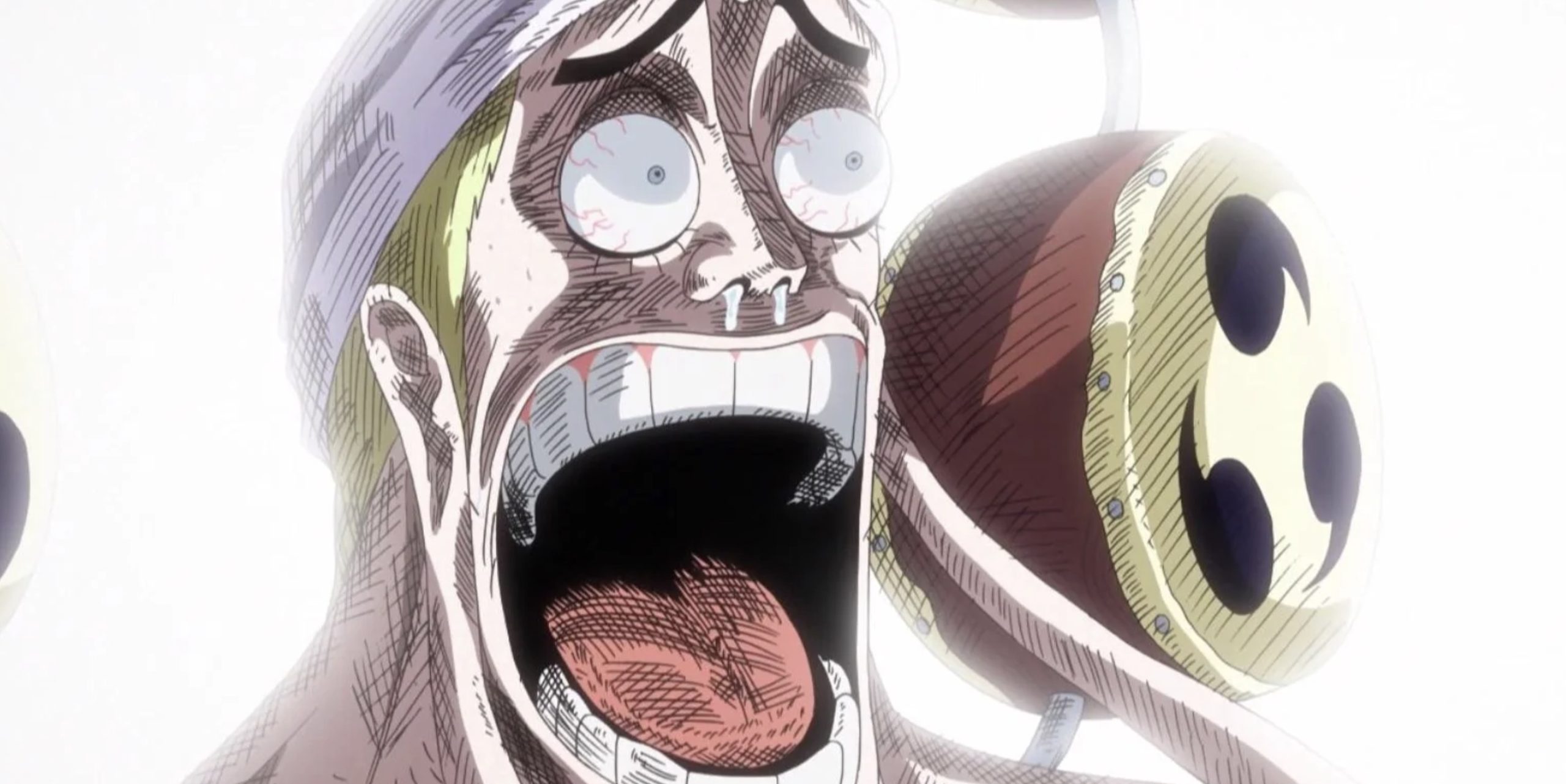
Fortunately, fate smiled upon Luffy when he encountered the talented navigator Nami, whose expertise in charting a course across any ocean proved invaluable to the crew. With Nami’s guidance and navigation skills, Luffy was no longer at the mercy of chance and could actively pursue his goals with purpose and direction.
Through the addition of Nami to his crew, Luffy not only overcame his weakness as a navigator but also learned the importance of relying on the strengths of his comrades to achieve their collective dreams.
This early lesson in teamwork and delegation laid the foundation for the Straw Hat Pirates’ future successes and cemented Luffy’s growth as a captain who values and trusts in the abilities of his crewmates.
3. Luffy is Susceptible to Haki-Enhanced Attacks
The introduction of the Haki combat system in One Piece marked both a boon and a threat to Monkey D. Luffy’s prowess in battle. Through rigorous training under the tutelage of Silvers Rayleigh, Luffy honed his ability to wield Haki, particularly the Color of Arms Haki, which has since become a cornerstone of his fighting style.
Harnessing the power of Haki has significantly enhanced Luffy’s combat capabilities, amplifying the effectiveness of his Gear 2 and Gear 3 techniques and playing a pivotal role in the development and utilization of Gear 4.
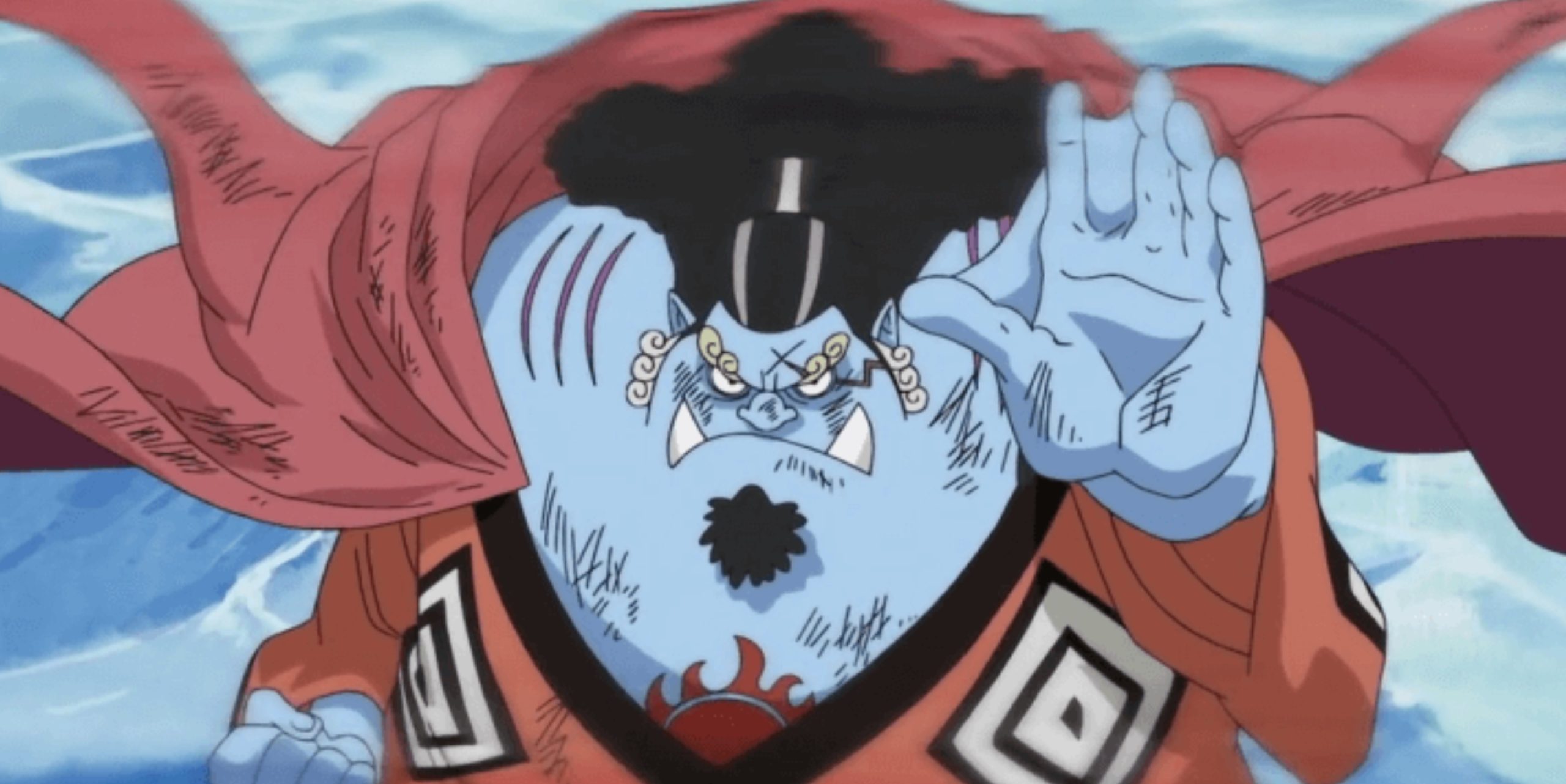
Luffy’s showdown against Donquixote Doflamingo vividly demonstrated the potency of Haki in bolstering his offensive and defensive capabilities, showcasing the formidable synergy between his rubber-based abilities and the enhanced strength granted by Haki.
However, the widespread adoption of Haki among Luffy’s adversaries also presents a formidable challenge. As One Piece fans have witnessed, Haki serves as a serious equalizer in combat, particularly against Devil Fruit users.
By imbuing their attacks with Haki, opponents can circumvent the inherent defenses of Devil Fruit’s abilities, rendering traditional weaknesses like Luffy’s rubbery elasticity moot. This development has rendered sea prism stone, once a primary means of neutralizing Devil Fruit powers, largely redundant in Haki-infused battles.
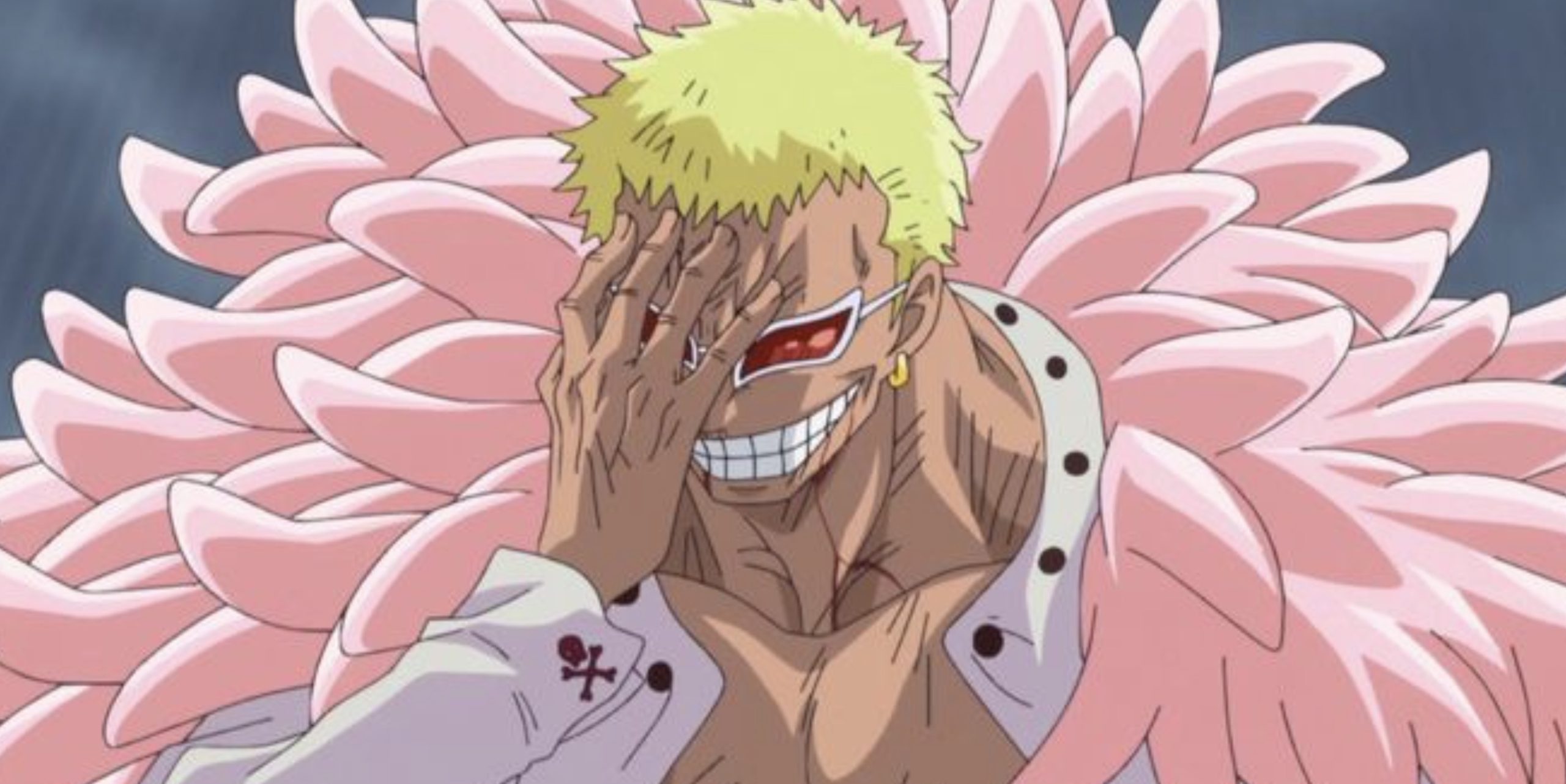
In Luffy’s case, adversaries equipped with Color of Arms Haki can bypass his rubbery defenses with ease, delivering devastating blows that exploit his vulnerabilities. As such, Luffy must remain vigilant and continuously refine his mastery of Haki to counter the growing threat posed by opponents who wield this powerful combat technique.
In One Piece, the introduction of Haki has reshaped the combat, presenting both new opportunities and formidable challenges for Monkey D. Luffy as he continues his quest to become the Pirate King.
2. Luffy Is Incapable of Swimming
One of Monkey D. Luffy’s earliest and most significant weaknesses, showcased at the outset of the One Piece story, is his vulnerability to seawater—a fundamental weakness shared by all Devil Fruit users.
Seawater has the unique ability to render Devil Fruit users helpless, robbing them of their strength and abilities as they struggle to stay afloat in its depths. Even the most powerful and skilled Devil Fruit users are rendered defenseless in the face of this elemental threat, unable to swim or activate their Devil Fruit powers.
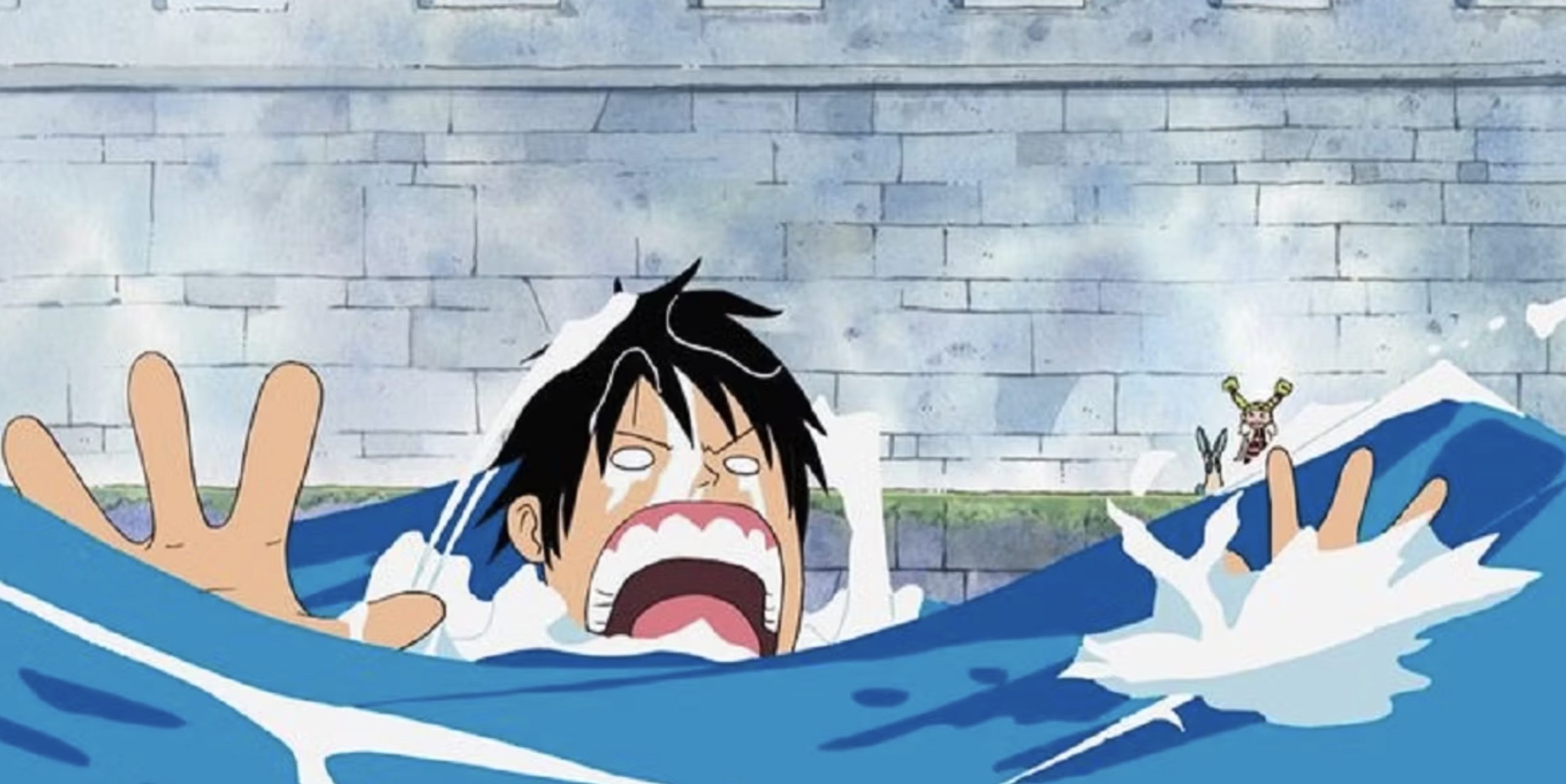
The peril posed by seawater has been exploited by adversaries seeking to gain the upper hand against Devil Fruit users. Instances such as the Navy crew’s attempt to exploit Sir Crocodile and Mr. 1’s weakness in seawater underscore the seriousness of this vulnerability and its potential strategic implications in combat.
Though Luffy has not directly faced this threat in some time, as the story has progressed and power levels have escalated, the danger of drowning remains a significant concern for him.
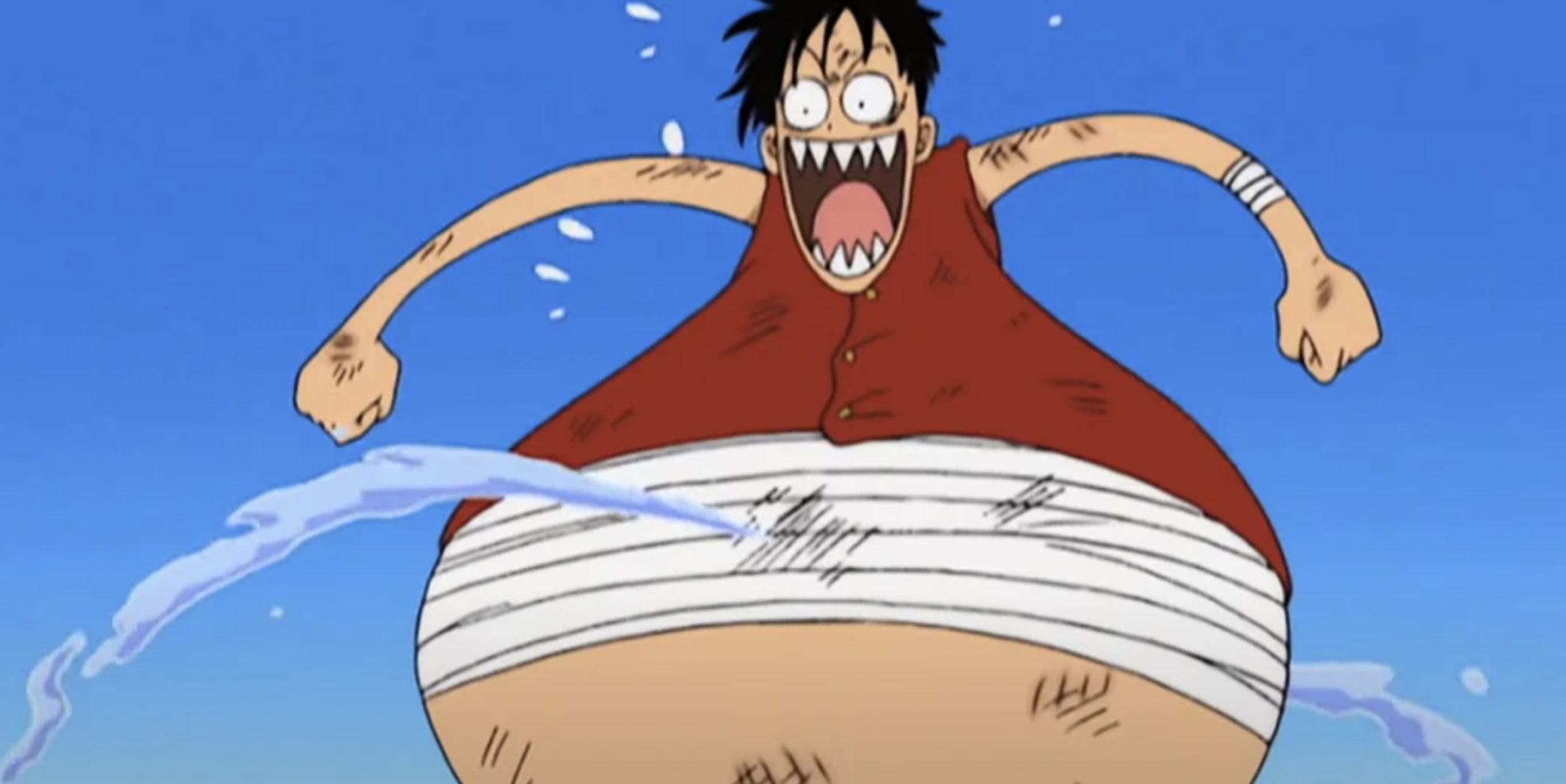
Despite the seeming impracticality of such a threat in the context of One Piece’s current power standards, the inherent danger of seawater looms over Luffy’s adventures, serving as a constant reminder of his vulnerability as a Devil Fruit user.
In fact, the loss of Shanks’ arm to a sea king while saving a young Luffy highlights the gravity of this weakness and the sacrifices made to protect those affected by it. Though Luffy’s strength and resilience have grown since then, the threat of drowning remains a potent danger, reminding him and his allies of the perilous nature of the seas they traverse.
1. Luffy is Susceptible to Elemental Attacks such as Ice, Fire, and Poison
The dynamics of combat between Devil Fruit users can be unpredictable, as each ability possesses its own strengths and weaknesses that can drastically affect the outcome of a battle.
As noted by Sir Crocodile, the interplay between different Devil Fruit powers adds an additional layer of complexity to confrontations, making it difficult to anticipate how one ability will fare against another.
For Monkey D. Luffy, his rubbery body affords him significant resilience against blunt force attacks, making him a formidable adversary in close combat. However, he is notably vulnerable to cutting attacks, which can bypass his elastic defenses and inflict substantial damage.

Additionally, elemental attacks pose an even greater threat to Luffy, as demonstrated by encounters with Devil Fruit users like Admiral Aokiji, who wields ice-based abilities, and Admiral Akainu, whose mastery of magma presents a formidable challenge.
During his clash with Aokiji on Long Ring Long Land, Luffy found himself at a severe disadvantage when he was swiftly frozen solid by the Admiral’s ice attacks, highlighting his vulnerability to elemental assaults.
Similarly, Luffy narrowly escaped death when he faced off against Akainu, whose devastating magma punch would have proved fatal had it not been intercepted by Luffy’s brother, Ace.
These encounters underscore the importance of adaptability and strategic thinking in combat, as well as the need for Luffy to continually hone his skills and expand his repertoire of techniques to effectively counter the diverse range of abilities possessed by his adversaries.
As he continues his journey to become the Pirate King, Luffy must remain vigilant and resourceful in the face of the myriad challenges posed by his fellow Devil Fruit users.


